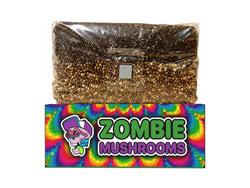- The newly declassified MKULTRA mind control documents confirm that the CIA experimented on at least 80 institutions, including universities, hospitals, and prisons.
- LSD was tested on unsuspecting subjects to explore its potential as a truth serum and behavioral control agent, often resulting in severe psychological distress.
- Many MKULTRA mind control records were destroyed in 1973 by CIA Director Richard Helms to erase evidence of the program's unethical experiments.
- Public exposure through journalistic investigations and congressional hearings led to widespread outrage and new oversight on intelligence activities.
- Despite its unethical origins, MKULTRA’s LSD experiments indirectly contributed to modern psychedelic-assisted therapy research.
The Origins of MKULTRA
In the early years of the Cold War, U.S. intelligence agencies were deeply concerned about reports suggesting that Soviet and Chinese governments had developed advanced brainwashing techniques. During the Korean War, captured American soldiers made confessions that seemed coerced, fueling fears that U.S. adversaries had discovered secret psychological manipulation methods. The CIA, desperate to understand and counteract these tactics, initiated its own mind control research.
The project that became MKULTRA officially launched in 1953 under the direction of CIA chemist Sidney Gottlieb. This program evolved from earlier secret operations like Project BLUEBIRD and Project ARTICHOKE, which explored coercive interrogation techniques, hypnosis, and secret drug administration. However, MKULTRA took these initiatives much further, pushing the boundaries of ethical and legal research in an attempt to master the control of human behavior.

The Use of LSD in Mind Control Experiments
One of the most infamous elements of MKULTRA was its extensive experimentation with LSD (lysergic acid diethylamide). The CIA saw LSD as an exciting yet unpredictable tool that could potentially serve as a truth serum, enhance torture techniques, or even be used for mass psychological disruption of enemy forces.
How LSD Was Administered
CIA researchers administered LSD in various ways:
- Without consent – Many subjects had no idea they were being drugged.
- High-dose experiments – Some individuals were subjected to repeated large doses to observe the psychological toll.
- Combination with hypnosis & sensory deprivation – Testing aimed to break subjects mentally for interrogation purposes.
Notable Experiments and Impact
Some of the most controversial LSD-related experiments included:
- Operation Midnight Climax: This was an extension of MKULTRA where CIA-hired prostitutes lured men into government-run brothels in San Francisco and New York. The unsuspecting men were given large doses of LSD as CIA agents secretly observed their reactions behind one-way mirrors. This unethical surveillance aimed to explore how the drug could be used for coercion.
- Experiments on Unwitting Psychiatric Patients: Several psychiatric hospitals, including the notorious Allan Memorial Institute in Canada, performed experiments on their patients, often subjecting them to prolonged LSD exposure combined with shocking psychological conditioning techniques like psychic driving (playing repeated messages to influence the subconscious).
- Military and Prison Experiments: Documents confirm that LSD was used on soldiers and prisoners, sometimes inducing terrifying hallucinations and lasting trauma.
The results were erratic and often devastating. Rather than producing reliable mind control techniques, LSD experiments frequently led to complete psychological breakdowns in subjects.
The Newly Released MKULTRA Documents
Recently, the National Security Archive (2024) declassified 1,200 documents, offering the most detailed look yet at MKULTRA’s secret investigations into behavioral control. These records reveal:
- At least 149 subprojects, spanning hypnosis, biological agents, and extreme psychological techniques.
- 80 institutions, including universities, hospitals, and prisons, were unwittingly involved.
- Extensive funding of third-party scientists, many of whom did not realize they were working for the CIA.
These revelations highlight not just the scale of the program but also the CIA’s manipulation of academic and medical institutions.

The Ethical Violations of MKULTRA
MKULTRA remains one of the gravest violations of human rights ever conducted by a U.S. Intelligence agency. The program involved:
- Non-consensual drug administration – Thousands of individuals were drugged without their knowledge.
- Physical and psychological torture – Many subjects suffered irreversible psychological damage.
- Targeting vulnerable populations – Prisoners, psychiatric patients, and marginalized groups were routinely used as test subjects.
Perhaps the worst abuses occurred in Canada's Allan Memorial Institute, where Dr. Ewen Cameron administered extreme doses of LSD and used psychic driving techniques in an attempt to erase patients' personalities. Victims were left with debilitating mental conditions, memory loss, and permanent trauma.
Why Were Many MKULTRA Documents Destroyed?
In 1973, then-CIA Director Richard Helms ordered massive document destruction to erase all traces of MKULTRA mind control activities. This move prevented much of the program’s full scope from ever being uncovered.
Despite this effort to cover up evidence, persistent investigations by journalists and researchers like John Marks (author of The Search for the "Manchurian Candidate") eventually forced key records into public view through Freedom of Information Act (FOIA) requests.
Media Exposure and Public Outcry
How the Public Learned About MKULTRA
For two decades, MKULTRA's operations remained largely hidden until journalist Seymour Hersh's 1974 exposé in The New York Times revealed CIA domestic spying and unethical experiments. This revelation ignited public outrage and led to:
- Congressional Hearings: The Church Committee (1976) concluded that 80 institutions had unknowingly participated in MKULTRA experiments, exposing the CIA's massive overreach.
- Legal Battles: Victims, including survivors of Canadian psychiatric experiments, later sued the CIA, forcing settlements in some cases.
These hearings established greater oversight on intelligence agencies, though many questions about MKULTRA remain unanswered.

The Role of MKULTRA in Shaping Psychedelic Research Today
Although the program was deeply unethical, MKULTRA inadvertently advanced the scientific understanding of psychedelics. The experiments played a role in demonstrating LSD’s ability to alter perception, cognition, and emotional states, findings that today inform psychedelic-assisted therapy for PTSD, depression, and addiction.
Currently, clinical trials on psilocybin (magic mushrooms), MDMA (ecstasy), and other psychedelics aim to use these substances for therapy—this time, under ethical guidelines emphasizing informed consent.
The Impact on Psychedelic Culture and Conspiracy Theories
MKULTRA has heavily influenced modern conspiracy theories, including beliefs that:
- The CIA used LSD to control the 1960s counterculture movement.
- Government-run mind control programs still exist in secret.
- Mass psychological manipulation tactics have continued beyond MKULTRA in updated forms.
While some of these theories remain speculative, MKULTRA undoubtedly contributed to public mistrust of intelligence agencies and reinforced concerns about covert psychological warfare programs.

The Future of Psychedelic Research and Ethics
The history of CIA mind control programs like MKULTRA serves as a powerful warning about the dangers of unchecked government experimentation. Today, ethical psychedelic research prioritizes:
- Informed consent – All participants are fully aware of risks.
- Therapeutic use instead of coercion – Psychedelics are being explored for PTSD, depression, and anxiety treatments.
- Strict oversight – Studies are conducted under regulatory scrutiny to prevent future abuses.
By continuing to study newly released MKULTRA documents, historians, scientists, and ethicists ensure that the mistakes of the past are not repeated while advancing legitimate, ethical science.
Citations
- National Security Archive. (2024). CIA and the Behavioral Sciences: Mind Control, Drug Experiments, and MKULTRA. Retrieved from https://nsarchive.gwu.edu
- Marks, J. (1979). The Search for the “Manchurian Candidate.” Times Books.
- Church Committee Reports. (1976). Final Report of the Select Committee to Study Governmental Operations with Respect to Intelligence Activities. U.S. Senate.




